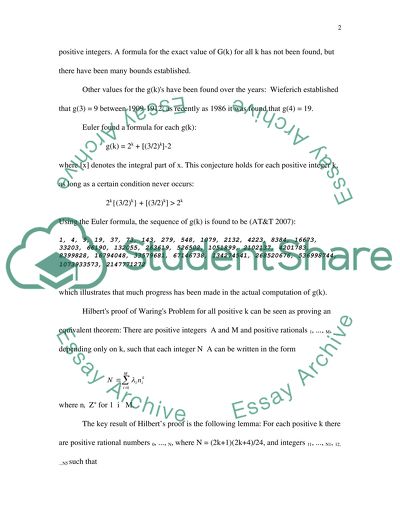Cite this document
(Warings Problem and Goldbachs Conjecture Assignment Example | Topics and Well Written Essays - 1500 words, n.d.)
Warings Problem and Goldbachs Conjecture Assignment Example | Topics and Well Written Essays - 1500 words. https://studentshare.org/mathematics/1544175-mathematics
Warings Problem and Goldbachs Conjecture Assignment Example | Topics and Well Written Essays - 1500 words. https://studentshare.org/mathematics/1544175-mathematics
(Warings Problem and Goldbachs Conjecture Assignment Example | Topics and Well Written Essays - 1500 Words)
Warings Problem and Goldbachs Conjecture Assignment Example | Topics and Well Written Essays - 1500 Words. https://studentshare.org/mathematics/1544175-mathematics.
Warings Problem and Goldbachs Conjecture Assignment Example | Topics and Well Written Essays - 1500 Words. https://studentshare.org/mathematics/1544175-mathematics.
“Warings Problem and Goldbachs Conjecture Assignment Example | Topics and Well Written Essays - 1500 Words”. https://studentshare.org/mathematics/1544175-mathematics.


